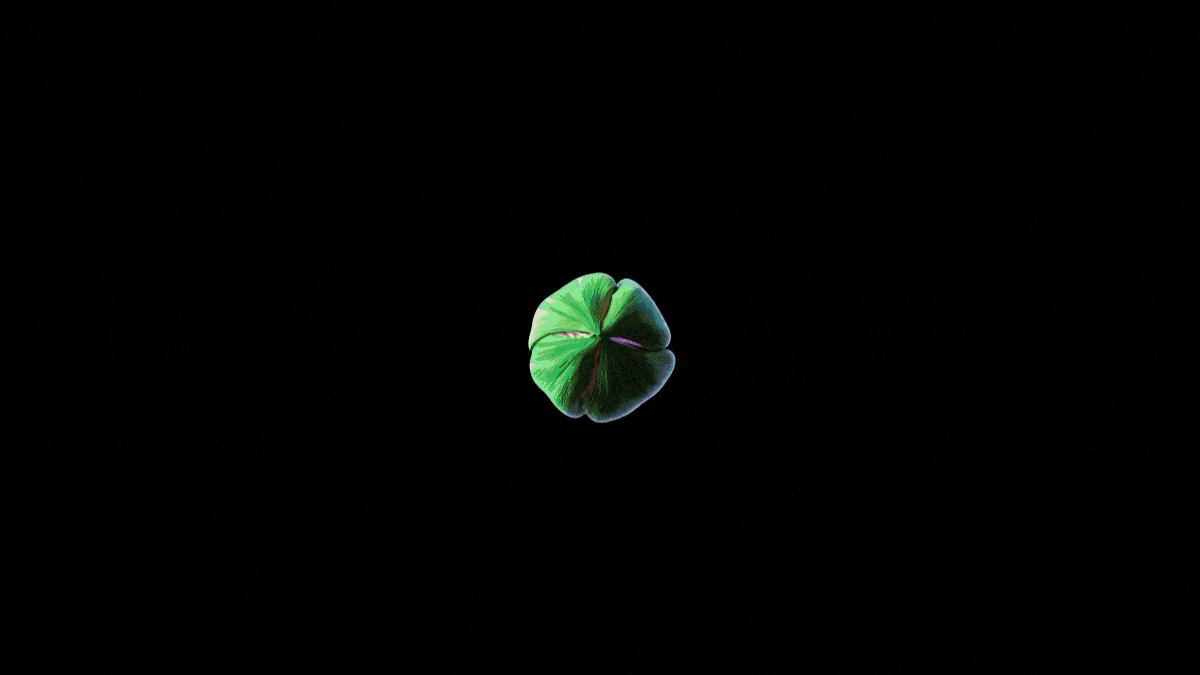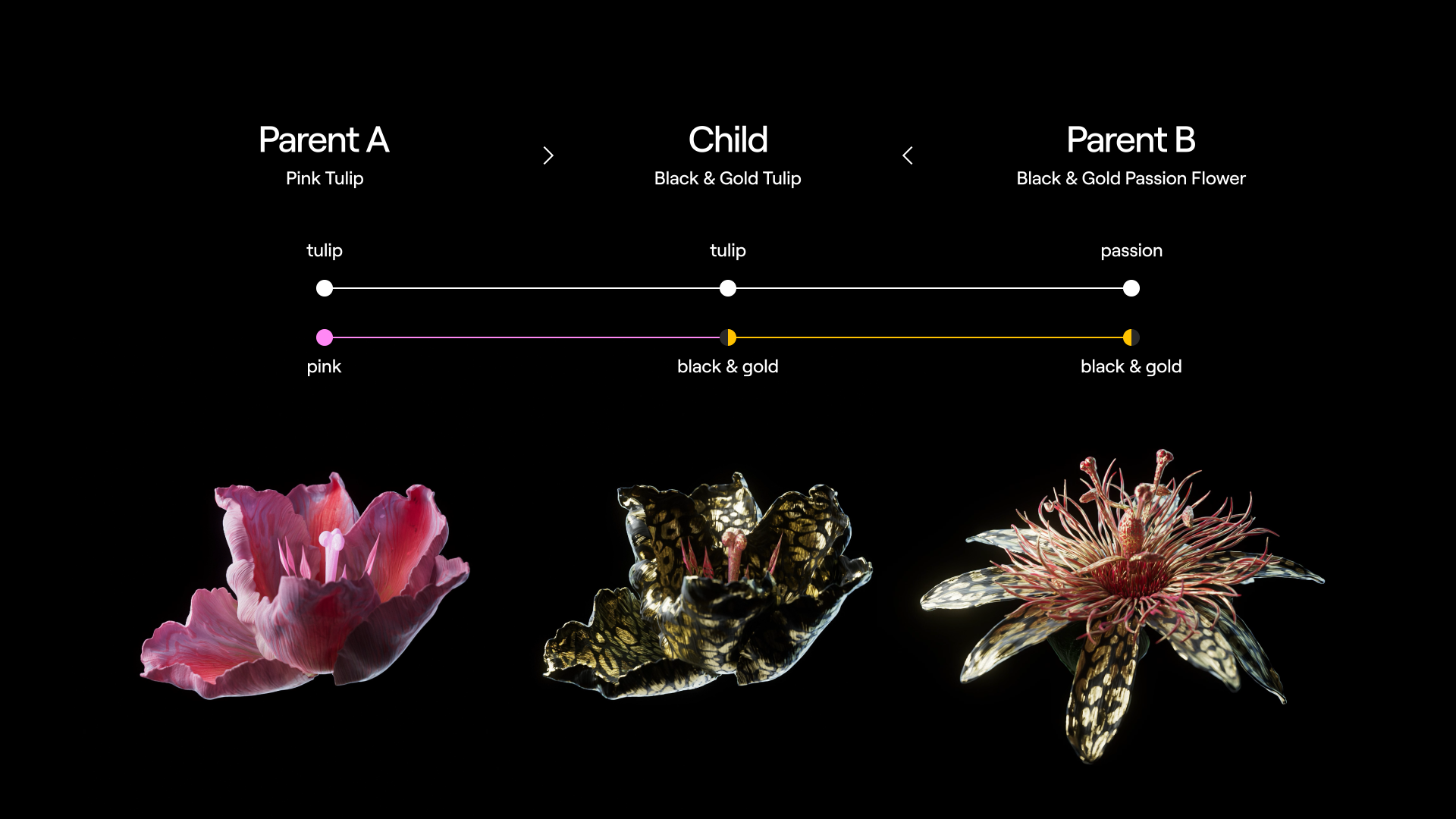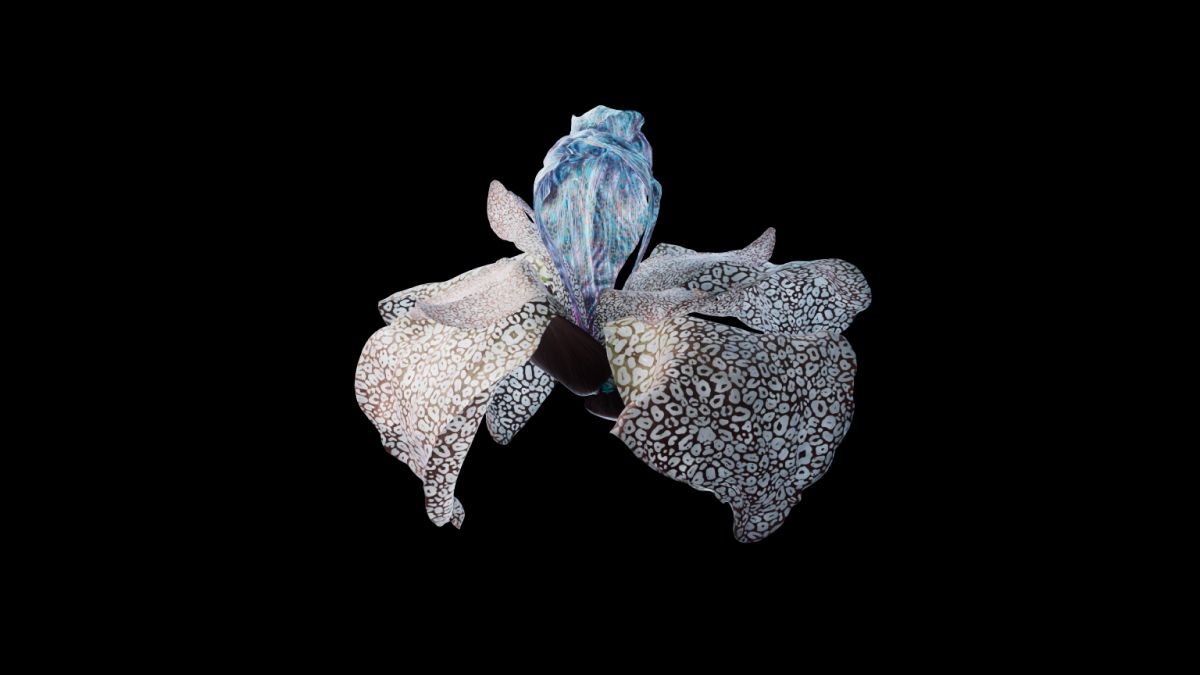Heterosis project explained
5 facts about the NFT collection and the metaverse Greenhouse

Created by Mat Collishaw and Danil Krivoruchko, Heterosis is a unique metaverse art experience, in which participants can cultivate their own bespoke animated NFT flowers.
Sounds cool right? Well, we’ve gone into detail and summed up 5 facts to explain the project and how it will function, so everyone is completely clear about how to make the most of the concepts and mechanics behind the project.
❶ Hybridise your own rare flowers and discover new species
Let’s start with the NFTs. Each flower has a unique title generated by AI, using words from ‘The Library of Babel’ a short story by Jorge Luis Borges. It also has a unique DNA - a combination of about 25 genes, and amongst these are species, material, petal shape, petal quantity, and core shape.

As in real life, each trait has a pair of values (or genes) - where one is dominant (or main) and the other recessive (or shadow). The way your flower looks is defined by its main values, but during the hybridization process, shadow and visible values may swap or mutate to completely new traits. When mutation happens, instead of inheriting a gene, the new flower can create a new color, pattern, or even a new species. Collectors are invited to become breeders or collaborative artists creating increasingly exotic and elaborate blooms!
❷ Keep or discard your new flower
The owner of a Heterosis flower NFT can select any other flower in the collection as a second parent. When the hybrid flower is generated, the owner can decide to either keep it and replace their current flower with the new generation, or keep their original flower. Thus the number of the NFTs in the collection doesn’t change. The second parent flower is not affected in any way by this hybridization. These mechanics, therefore, allow collectors to breed their flowers and keep only the version they really like.

❸ Get paid to breed your flowers
To hybridise their flowers, collectors have to pay a fee made up of two parts. The first (and smaller of the two) is the ecosystem fee, covering the cost of re-simulating and rendering a new child flower. The second is the collectors' fee - payment to the owner of the second parent flower.
Collectors themselves set the prices for hybridization with their flowers. So if a collector has spent significant resources and mutated their flower to achieve a rare and exciting combination of genes, they can set their fee higher.

Each collector is exempted from paying the ecosystem fee on their very first breed after the mint, and if a collector is hybridising between the several flowers that they own themselves - then they won’t need to pay a collectors’ fee either. So, for example, if you breed two NFTs that you have just minted, then you can make those first hybridizations for each of the two flowers entirely for free, to see how it all works.
❹ Find your flower: A post-apocalyptic London’s National Gallery
Dynamic NFT flowers exist in the digital wallets of their respective owners, as well as collectively in an extraordinary metaverse ‘Greenhouse’ — a virtual, post-apocalyptic recreation of London’s National Gallery. All the NFT flowers can be seen growing in their current forms among the abandoned, overgrown remnants of this historic building.
People entering the space create avatars that are connected to OG.Art accounts and identified by the viewer's wallets. The Greenhouse operates as a public space - viewers can freely move through it, see and talk to each other through an inbuilt audio system. Through the user interface, owners may find and zoom in on their flowers and get information about features and prices.

❺ CryptoKitties mechanics with a twist
The Heterosis general mechanics are based on the iconic CryptoKitties project's breeding mechanics, but of course, with some significant changes. The main difference being that in CryptoKitties, collectors breed two ‘parents’ to create a new Kitty, and thus the size of the entire collection is constantly growing. While in Heterosis, the number of tokens in the collection is fixed, and so the total number of flowers doesn't change in the breeding process.

The mechanics of Heterosis are only possible in the crypto space, with its collectors becoming interactive breeders of digital flowers. We are all co-creators here, and the resulting artwork will be a collective effort and ultimately something wonderfully unpredictable!
So join the waitlist and stay tuned for more updates and important info on how to get your hands on one of these botanical beauties.

